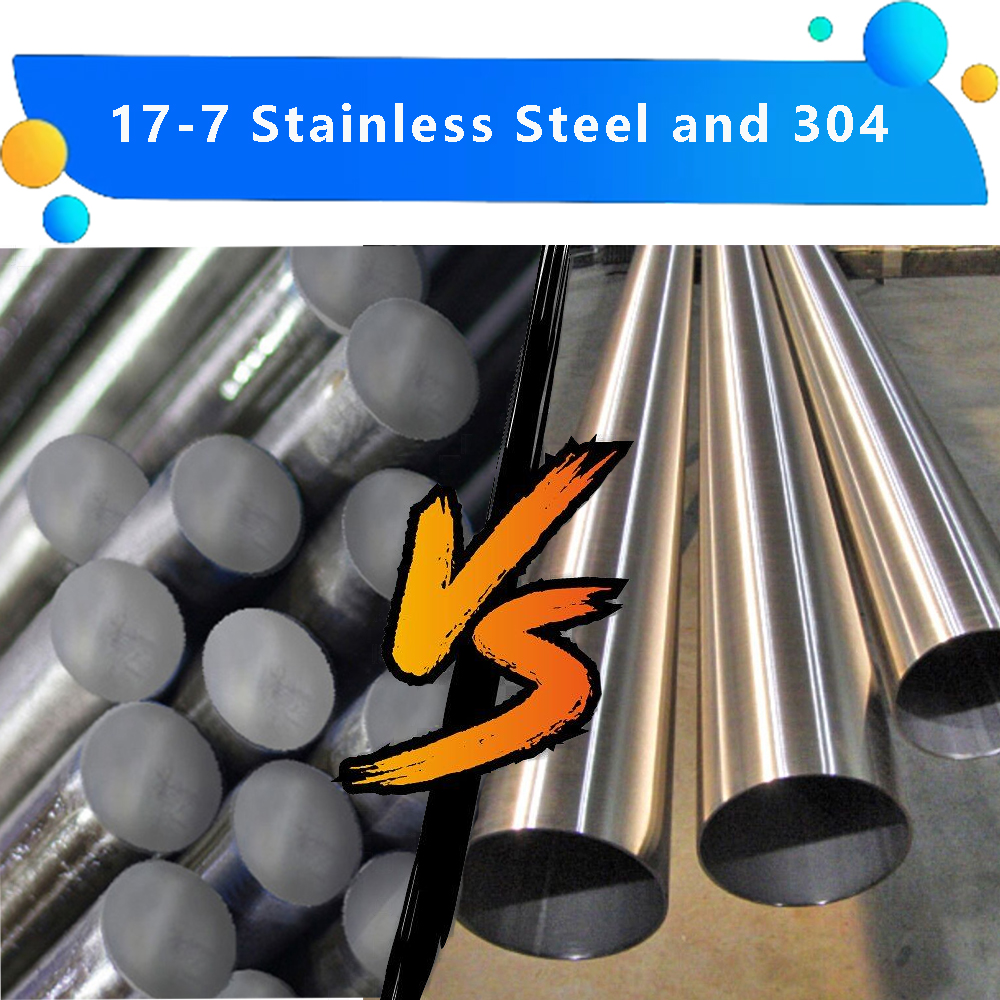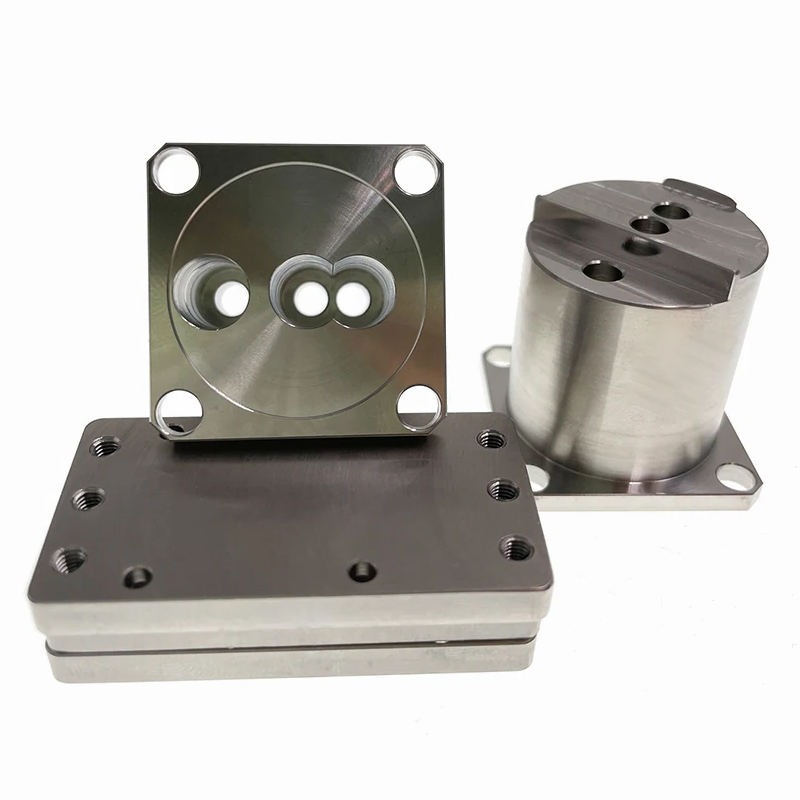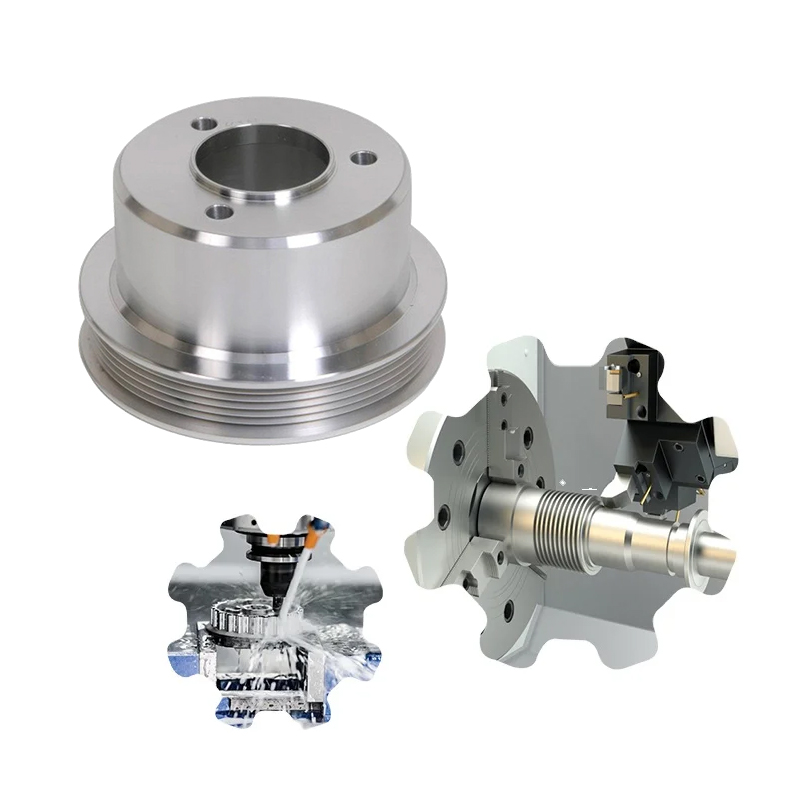What is the Difference Between 17-7 Stainless Steel and 304?
 Jun 20,2024
Jun 20,2024

Understanding the properties and differences between stainless steel grades is crucial. It helps engineers and manufacturers select the appropriate material for their projects. This article explores the key differences between two commonly used stainless steel grades, 17-7 and 304. It examines their composition, mechanical properties, applications, corrosion resistance, and cost.
Understanding Stainless Steel
Stainless steel is an iron-based alloy commonly used in various applications due to its corrosion resistance and strength. The addition of chromium (at least 10.5%) to steel is what grants it stainless properties. Other elements are also added to modify the structure and properties, creating several types of stainless steel, each suited to specific applications.

Composition of 17-7 and 304 Stainless Steel
Understanding the composition of stainless steel grades is crucial for determining their applications and suitability for specific environments. Here, we'll explore the chemical makeup of two prominent stainless steel grades, 17-7 and 304. We will also examine how their composition affects their performance.
17-7 Stainless Steel Composition
17-7 stainless steel, designated as UNS S17700, is known for its high strength and good corrosion resistance. It falls under the category of precipitation-hardening stainless steels, which means it can be strengthened through heat treatment processes. The typical chemical composition of 17-7 stainless steel is:
|
Element |
Percentage |
|
Chromium (Cr) |
16.0 - 18.0% |
|
Nickel (Ni) |
6.5 - 7.75% |
|
Aluminum (Al) |
0.75 - 1.5% |
|
Carbon (C) |
Up to 0.09% |
|
Manganese (Mn) |
Up to 1.0% |
|
Silicon (Si) |
Up to 1.0% |
|
Phosphorus (P) |
Up to 0.04% |
|
Sulfur (S) |
Up to 0.03% |
|
Iron (Fe) |
Balance |
304 Stainless Steel Composition
304 stainless steel, also known as A2 stainless steel or 18/8 stainless steel, is the most commonly used austenitic stainless steel. It is well-known for its excellent corrosion resistance and formability. The typical chemical composition of 304 stainless steel is:
|
Element |
Percentage |
|
Chromium (Cr) |
18.0 - 20.0% |
|
Nickel (Ni) |
8.0 - 10.5% |
|
Carbon (C) |
Up to 0.08% |
|
Manganese (Mn) |
Up to 2.0% |
|
Silicon (Si) |
Up to 1.0% |
|
Phosphorus (P) |
Up to 0.045% |
|
Sulfur (S) |
Up to 0.03% |
|
Iron (Fe) |
Balance |
Mechanical Properties
Mechanical properties are key differentiators between 17-7 and 304. The heat treatment process significantly enhances the strength of 17-7, making it suitable for demanding applications where high strength and hardness are required. Conversely, 304 is non-hardening but offers excellent toughness and weldability.

Corrosion Resistance
When selecting a stainless steel grade, weldability and formability are crucial considerations. These impact the material’s suitability for various applications. This section will delve into these properties for 17-7 and 304 stainless steel. These are two widely used grades with differing characteristics.
17-7 Stainless Steel Corrosion Resistance
It provides strong resistance to corrosion, particularly oxidation and corrosive substances. However, it's slightly less resistant to corrosion compared to 304 due to its precipitation-hardening characteristics.
304 Stainless Steel Corrosion Resistance
Known for its robust corrosion resistance, 304 stainless steel is ideal for environments exposed to corrosive elements. It performs exceptionally well against a variety of chemicals and acids.
Applications
The versatility of stainless steel allows it to be used in a myriad of applications across various industries. The distinct properties of 17-7 and 304 stainless steel grades make them suitable for specific uses based on their strength, corrosion resistance, and formability. Here we explore the typical applications of both 17-7 and 304 stainless steel.
17-7 Stainless Steel Applications
Due to its strength and durability after heat treatment, 17-7 is often used in aerospace, military, and high-tech industries. It is ideal for springs, gears, and other components that require high strength-to-weight ratios.
304 Stainless Steel Applications
This steel's formability and corrosion resistance make it suitable for a wide range of applications. These include kitchenware, chemical equipment, architectural facades, and automotive parts.

Cost Considerations
When choosing between 17-7 and 304, cost is an essential factor.17-7 is generally more expensive. This is due to its specialized properties. The costs associated with its production and processing also contribute to its price. In contrast, 304 is more readily available. It is less expensive. This makes it a cost-effective choice for many applications.
Weldability and Formability
When selecting a stainless steel grade, weldability and formability are crucial considerations. These factors impact the material’s suitability for various applications. This section will delve into these properties for 17-7 stainless steel. It will also cover 304 stainless steel. These are two widely used grades. They have differing characteristics.
17-7 Stainless Steel Weldability and Formability
17-7 stainless steel is a precipitation-hardening stainless steel that offers high strength and good corrosion resistance. Its weldability and formability, however, are somewhat limited compared to more ductile grades like 304. Here are the key points regarding 17-7:
17-7 Stainless Steel Weldability
Welding 17-7 stainless steel requires careful attention to avoid cracking and distortion. Because it is a precipitation-hardening steel, it must be welded in a condition that is overaged. This ensures optimal precipitation of phases. It also prevents the loss of ductility and toughness at the weld joints. Specialized welding processes are recommended. These include TIG (Tungsten Inert Gas) and MIG (Metal Inert Gas). Preheating and post-weld heat treatment may also be necessary to maintain mechanical properties.
17-7 Stainless SteelFormability
The formability of 17-7 is less than that of austenitic stainless steels. This is due to its higher strength and hardness. It is more prone to springback during bending and forming operations. Therefore, more powerful machinery is required to form it. Heat treating before forming can improve formability. However, this must be balanced with the potential for reduced corrosion resistance and strength.
304 Stainless Steel Weldability and Formability
304 stainless steel is an austenitic stainless steel. It is renowned for its excellent formability. It is also known for its weldability. These properties make it suitable for a wide range of applications.
304 Stainless SteelWeldability
304 is one of the easiest stainless steels to weld due to its stable austenitic structure. This structure helps to avoid problems like weld decay and intergranular corrosion. It does not require post-weld heat treatment, which is advantageous for maintaining the original corrosion resistance and strength of the weld area. Common welding techniques like TIG, MIG, and resistance welding perform well with 304 stainless steel.
304 Stainless SteelFormability
This grade excels in formability. It can be easily formed into a variety of shapes, from complex geometrical forms to deep draws. Its low yield strength and high elongation allow it to be worked into intricate shapes without requiring significant force. This reduces tool wear and energy usage in manufacturing processes.
Conclusion
Choosing between 17-7 and 304 stainless steel depends on specific project requirements. These include environmental exposure, mechanical demands, and budget constraints. This comprehensive comparison provides a foundation for understanding how each grade could best serve various applications. It ensures optimal performance and efficiency.
 Tel/WeChat:
Tel/WeChat:  Email:
Email: 
 Home
Home
 1018 Stainless Steel vs 304: What's the Difference?
1018 Stainless Steel vs 304: What's the Difference? 







